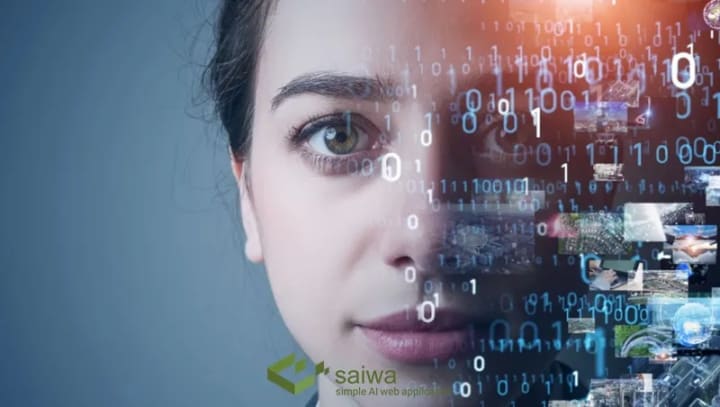Computer vision models have revolutionized how machines interpret visual information. These models enable computers to recognize, process, and analyze images and videos, mimicking the human visual system. With advancements in machine learning and artificial intelligence, computer vision models have become integral to various industries, from healthcare to automotive.
What Are Computer Vision Models?
Computer vision models are algorithms designed to process and understand visual data. These models use deep learning techniques to interpret the content of images and videos. Essentially, a computer vision model takes an image as input and produces valuable information, such as object detection, facial recognition, or scene segmentation. The effectiveness of computer vision models depends on their ability to learn from large datasets and make accurate predictions based on new data.
How Do Computer Vision Models Work?
At the core of computer vision models is a neural network, a computational system inspired by the human brain's structure. These networks consist of interconnected layers of nodes, each performing specific functions to process visual information.
1. Convolutional Neural Networks (CNNs): One of the most popular types of computer vision models is the Convolutional Neural Network (CNN). CNNs are particularly effective at image classification and object detection. They use convolutional layers to automatically detect features in an image, such as edges or textures, which are then used to identify objects or patterns.
2. Recurrent Neural Networks (RNNs): While CNNs are excellent for static images, Recurrent Neural Networks (RNNs) are used in computer vision models for tasks involving sequences, such as video analysis. RNNs can process sequences of images to understand temporal patterns and actions.
3. Generative Adversarial Networks (GANs): GANs are another type of computer vision model that excels in generating realistic images. They consist of two neural networks – a generator and a discriminator – that work against each other to produce high-quality images.
Applications of Computer Vision Models

Computer vision models are used in various applications, each leveraging their ability to analyze visual data. Here are some notable examples:
1. Healthcare: In medical imaging, computer vision models assist in diagnosing diseases by analyzing X-rays, MRIs, and CT scans. For instance, computer vision models can detect anomalies such as tumors or fractures with high precision, aiding radiologists in their diagnoses.
2. Automotive Industry: Autonomous vehicles rely heavily on computer vision models to navigate and make real-time decisions. These models process data from cameras and sensors to detect obstacles, recognize traffic signs, and understand road conditions.
3. Retail: Computer vision models enhance the shopping experience through automated checkout systems. By analyzing images of products, these models can track items and process transactions without the need for physical barcodes.
4. Agriculture: In agriculture, computer vision models are used for crop monitoring and pest detection. These models analyze images from drones or cameras to assess crop health, identify diseases, and optimize farming practices.
5. Security: Surveillance systems benefit from computer vision models through enhanced security measures such as facial recognition and anomaly detection. These models help monitor public spaces and identify potential security threats.
The Future of Computer Vision Models
The future of computer vision models holds exciting possibilities. As technology advances, these models are expected to become even more sophisticated and capable. Here are some trends and developments to watch:
1. Improved Accuracy: Ongoing research aims to enhance the accuracy of computer vision models. Techniques such as transfer learning and few-shot learning are being explored to improve model performance with limited data.
2. Real-Time Processing: Real-time processing of visual data is becoming increasingly important, especially in applications like autonomous driving. Future computer vision models will need to handle vast amounts of data quickly and efficiently.
3. Integration with Other Technologies: The integration of computer vision models with other technologies, such as augmented reality (AR) and virtual reality (VR), will create new opportunities for immersive experiences and interactive applications.
4. Ethical Considerations: As computer vision models become more prevalent, ethical considerations around privacy and data security will gain prominence. Ensuring that these models are used responsibly and transparently will be crucial.
5. Accessibility and Customization: Advances in technology will make computer vision models more accessible to a wider range of industries and applications. Customizable models will allow businesses to tailor solutions to their specific needs.
Challenges and Considerations

While computer vision models offer numerous benefits, there are also challenges to address:
1. Data Privacy: The use of computer vision models, particularly in surveillance and monitoring, raises concerns about data privacy and security. It is essential to implement robust measures to protect sensitive information.
2. Bias and Fairness: Computer vision models can inadvertently reinforce biases present in the training data. Ensuring fairness and minimizing bias in these models is an ongoing challenge that requires careful attention.
3. Computational Resources: Training and deploying computer vision models require significant computational resources. Advances in hardware and cloud computing are helping address this challenge, but it remains a consideration for many organizations.
Conclusion
Computer vision models are a cornerstone of modern artificial intelligence, transforming how machines perceive and interact with the visual world. From healthcare to automotive and beyond, these models are driving innovation and enhancing various industries. As technology continues to evolve, computer vision models will play an increasingly vital role in shaping the future. By understanding their capabilities, applications, and challenges, we can better appreciate the impact of computer vision models on our daily lives and the broader world.
Saiwa is an online platform which provides privacy preserving artificial intelligence (AI) and machine learning (ML) services, from local (decentralized) to cloud-based and from generic to customized services for individuals and companies to enable their use of AI in various purposes with lower risk, without the essence of a deep knowledge of AI and ML and large initial investment.

Comments
Post a Comment